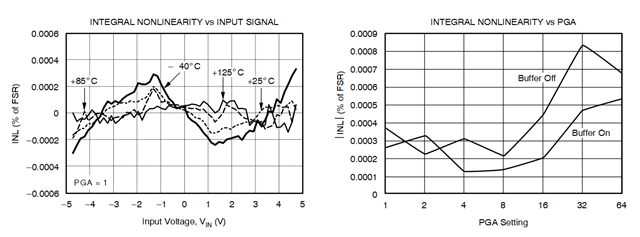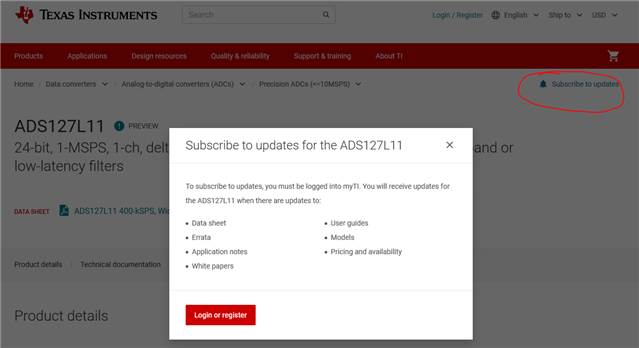Other Parts Discussed in Thread: REF70, PGA280, ADS127L11, ADS1262
Hello,
1. Introduction
My application requires high linearity ADC. I've looked at TI product portfolio and I have chosen ADS1256. According to datasheets ADS126x series are not better and they cost more. The analog frontend consist of PGA280 connected to AnIn0&ANIn1 and discrete opamps circuits for other AnIn s. Circuit will operate in precision temperature controlled chamber @35degree.Humidity will be measured but not controlled. Vref is served by REF70 and crosschecked by LTZ1000A.
2. Questions
ADS1256 datasheet specify nonlinearity with single parameter "integral non linearity - INL" 3ppm typical 10ppm max.
- Can I minimize INL error with calibration. E,g Using voltage source and highly linear HP3458 8 1/2 digit DMM.
- What is the shape of of INL error vs output code? - Answer of this question will help me to apply linearization polynomial.
- are any TI devices with lower INL or easier way to characterize / linearize?
- How can I minimize INL od ADS1256. E.g. does two or more ADS1256 running in parallel minimize INL?
- what is the main source for INL errors inside IC, input SC, integrators comparators or something else?
Thanks in advance
Mirtcho




